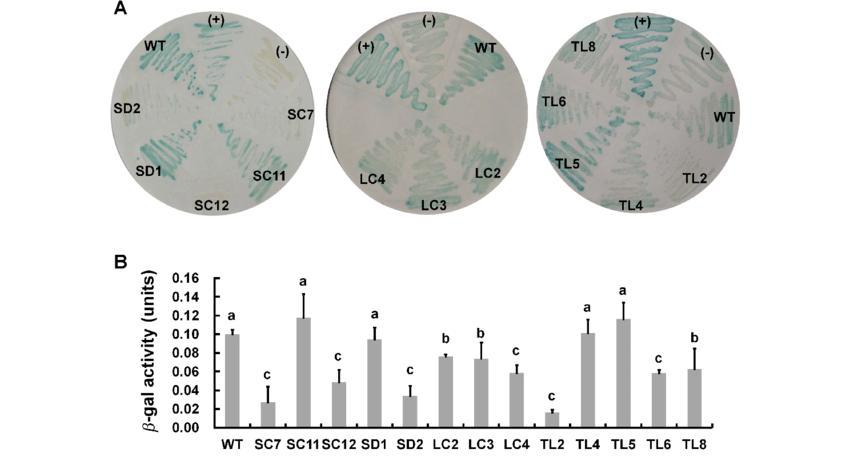Protein-protein interactions play a critical role in virtually all cellular processes. Identifying and characterizing these interactions is therefore essential for understanding cellular signaling pathways, enzymatic reactions, and other biological processes. The yeast three-hybrid system (Y3H) is a powerful molecular tool for identifying and characterizing protein-protein interactions in vivo. In this article, we will explain what the Y3H system is, how it works, and how to measure β-galactosidase activity in Y3H assays.
What is Yeast Three-Hybrid System?
The utilization of the Y3H system provides an in vivo method of detecting and characterizing protein-protein interactions. The Y3H system is derived from the yeast two-hybrid (Y2H) system that was originally established during the early 1990s. In the Y2H system, two proteins of interest are combined with distinct structural domains of the yeast transcription factor Gal4. This process leads to the formation of Gal4 fusion protein, which then initiates an interaction that brings the two structural domains of Gal4 into proximity, resulting in the activation of the reporter gene.
The Y3H system expands upon the Y2H method by introducing a bridging protein, or decoy, as a third component. The bridging protein is fused with a structural domain of the yeast RNA polymerase II holoenzyme, which is accountable for transcribing yeast genes. Furthermore, the Gal4 activation structural domain is also fused with the bridging protein. As a result, the reporter gene is transcribed upon interaction of the protein of interest with the bridging protein. This innovative approach allows for the identification and characterization of protein-protein interactions involving both soluble and membrane-bound proteins.
 THE YEAST THREE-HYBRID SYSTEM FOR TARGET IDENTIFICATION (Cottier et al., 2021).
THE YEAST THREE-HYBRID SYSTEM FOR TARGET IDENTIFICATION (Cottier et al., 2021).
How Does Yeast Three-Hybrid Work?
In order to successfully conduct a Y3H experiment, one must introduce a plasmid expressing the Gal4 fusion protein into a chosen yeast strain. The yeast must then be cultivated on a highly selective medium that solely permits the survival of cells with an active reporter gene. Once the protein of interest interacts with the bridging protein, activation of the reporter gene occurs, thus allowing for the growth of yeast on the selective medium. This growth pattern conclusively demonstrates that a protein-protein interaction has indeed taken place.
How to Measure β-galactosidase Activity in Yeast 3 Hybrid?
Measuring β-galactosidase activity in yeast three-hybrid assays is a commonly used method for quantifying protein-protein interactions. The reporter gene in the Y3H system is often lacZ, which encodes the enzyme β-galactosidase. The enzyme cleaves the substrate X-gal (5-bromo-4-chloro-3-indolyl β-D-galactopyranoside), producing a blue color that can be detected spectrophotometrically.
Here are the general steps for measuring β-galactosidase activity in yeast three-hybrid assays:
- Grow the yeast cells containing the fusion proteins of interest on a selective medium. The medium may contain specific nutrients and/or antibiotics to maintain selection for the plasmids carrying the fusion genes.
- Collect the yeast cells by centrifugation, and lyse them using a lysis buffer that breaks open the cells and releases the protein of interest.
- Mix the lysed yeast cells with the substrate X-gal in a buffer that supports the β-galactosidase activity. The reaction mixture is then incubated for a set amount of time at a specific temperature to allow for an enzyme-substrate reaction to occur.
- Stop the reaction by adding a stop solution, such as sodium carbonate, which stabilizes the reaction product.
- Measure the absorbance of the reaction mixture at a specific wavelength using a spectrophotometer. The intensity of the blue color produced is proportional to the amount of β-galactosidase activity.
- Calculate the level of β-galactosidase activity by comparing the absorbance of the experimental sample with a standard curve generated using known concentrations of β-galactosidase or by using a calibration curve.
 Yeast three-hybrid assay (Cho et al., 2012). (A) β-galactosidase filter assay. (B) Liquid culture assay.
Yeast three-hybrid assay (Cho et al., 2012). (A) β-galactosidase filter assay. (B) Liquid culture assay.
References
- Cottier, Stéphanie, et al. "The yeast three-hybrid system as an experimental platform to identify proteins interacting with small signaling molecules in plant cells: potential and limitations." Frontiers in plant science (2011): 101.
- Cho, Sang-Yun, and Kook-Hyung Kim. "Identification of the Capsid Protein-binding Region of the SL1 (+) RNA Located at the 5'Region of the Potato virus X Genome." The Plant Pathology Journal 28.1 (2012): 75-80.

